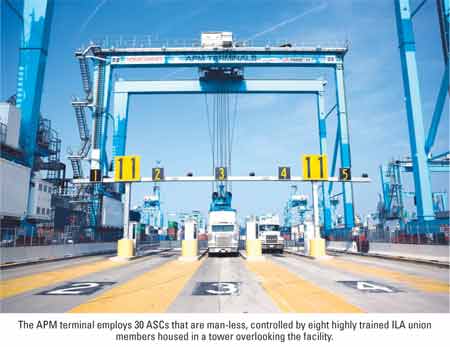
NORDIC / SECURITY / INFRASTRUCTURE 2009 - Equipment technology
The yard crane market - Part IBy: Martin C. Pilsch, Equipment and Port DevelopmentEven though rubber tired yard gantry cranes (RTGs) out number their rail mounted cousins (RMGs) and automated stacking cranes (ASCs), RTG manufacturers continue their race to develop increased dimensions, alternative power systems and automated features so that their product will compete favorably with the advantages offered by the rival RMG/ASC systems. It is interesting to note that the majority of the leading RTG manufacturers also are leaders in the RMG market and a number of those have also developed the technology necessary to market ASC.
If you like to play the numbers game, production records demonstrate that there are far more RTGs in the field than the combined populations of RMGs/ASC. One manufacturer alone has produced over 2,000 RTGs. The estimated number of RTGs manufactured during the last four years totaled over 3,000 while the number of RMG/ASC during the same period totaled over 540.






